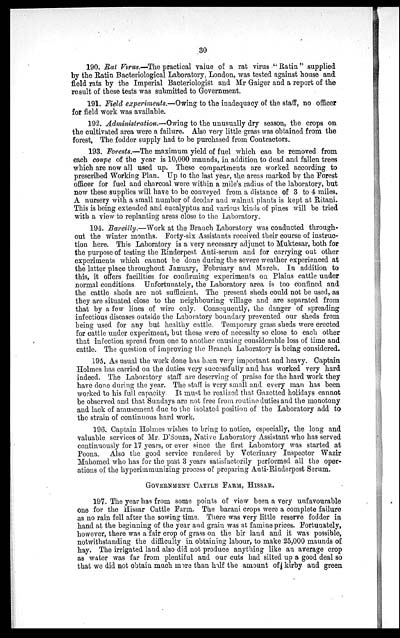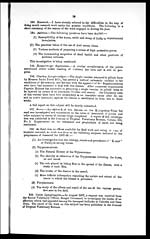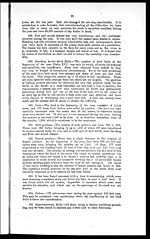Medicine - Veterinary > Civil Veterinary Departments > Annual administration report of the Civil Veterinary Department of India > 1907-1908 > Part B - Imperial administration
(41) Page 30
Download files
Individual page:
Thumbnail gallery: Grid view | List view

30
190. Rat Virus.—The practical value of a rat virus "Ratin" supplied
by the Ratin Bacteriological Laboratory, London, was tested against house and
field rats by the Imperial Bacteriologist and Mr Gaiger and a report of the
result of these tests was submitted to Government.
191. Field experiments.—Owing to the inadequacy of the staff, no officer
for field work was available.
192. Administration.—Owing to the unusually dry season, the crops on.
the cultivated area were a failure. Also very little grass was obtained from the
forest. The fodder supply had to be purchased from Contractors.
193. Forests.—The maximum yield of fuel which can be removed from
each coupe of the year is 10,000 maunds, in addition to dead and fallen trees
which are now all used up. These compartments are worked according to
prescribed Working Plan. Up to the last year, the areas marked by the Forest
officer for fuel and charcoal were within a mile's radius of the laboratory, but
now these supplies will have to be conveyed from a distance of 3 to 4 miles.
A nursery with a small number of deodar and walnut plants is kept at Ritani.
This is being extended and eucalyptus and various kinds of pines will be tried
with a view to replanting areas close to the Laboratory.
194. Bareilly.—Work at the Branch Laboratory was conducted through-
out the winter months. Forty-six Assistants received their course of instruc-
tion here. This Laboratory is a very necessary adjunct to Muktesar, both for
the purpose of testing the Rinderpest Anti-serum and for carrying out other
experiments which cannot be done during the severe weather experienced at
the latter place throughout January, February and March. In addition to
this, it offers facilities for confirming experiments on Plains cattle under
normal conditions. Unfortunately, the Laboratory area is too confined and
the cattle sheds are not sufficient. The present sheds could not be used, as
they are situated close to the neighbouring village and are separated from
that by a few lines of wire only. Consequently, the danger of spreading
infectious diseases outside the Laboratory boundary prevented our sheds from
being used for any but healthy cattle. Temporary grass sheds were erected
for cattle under experiment, but these were of necessity so close to each other
that infection spread from one to another causing considerable loss of time and
cattle. The question of improving the Branch Laboratory is being considered.
195. As usual the work done has been very important and heavy. Captain
Holmes has carried on the duties very successfully and has worked very hard
indeed. The Laboratory staff are deserving of praise for the hard work they
have done during the year. The staff is very small and every man has been
worked to his full capacity. It must be realized that Gazetted holidays cannot
be observed and that Sundays are not free from routine duties and the monotony
and lack of amusement due to the isolated position of the Laboratory add to
the strain of continuous hard work.
196. Captain Holmes wishes to bring to notice, especially, the long and
valuable services of Mr. D'Souza, Native Laboratory Assistant who has served
continuously for 17 years, or ever since the first Laboratory was started at
Poona. Also the good service rendered by Veterinary Inspector Wazir
Mahomed who has for the past 3 years satisfactorily performed all the oper-
ations of the hyperimmunizing process of preparing Anti-Rinderpest Serum.
GOVERNMENT CATTLE FARM, HISSAR.
197. The year has from some points of view been a very unfavourable
one for the Hissar Cattle Farm. The barani crops were a complete failure
as no rain fell after the sowing time. There was very little reserve fodder in
hand at the beginning of the year and grain was at famine prices. Fortunately,
however, there was a fair crop of grass on the bir land and it was possible,
notwithstanding the difficulty in obtaining labour, to make 25,000 maunds of
hay. The irrigated land also did not produce anything like an average crop
as water was far from plentiful and our cuts had silted up a good deal so
that we did not obtain much more than half the amount of kirby and green
Set display mode to: Large image | Zoom image | Transcription
Images and transcriptions on this page, including medium image downloads, may be used under the Creative Commons Attribution 4.0 International Licence unless otherwise stated. ![]()
| Permanent URL | https://digital.nls.uk/75509606 |
|---|




